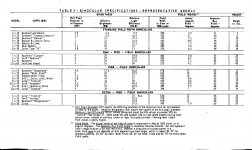Charlie Yardbird
Well-known member

I'll start.
For min IPD, I measure from one inner edge to the other, trying to look straight down
with one eye to line it up, then straight down on the other side. Not sure how much
individual variation there is on the hinges touching. No need to try to visualize the
innermost "ring" because they are all the same thickness, so whatever ring is easy
to see.
Audobon Mark II (Type 2b) 8.5x44, 445 ft Extra Wide Field so 8.49 deg, min IPD ~53mm
Holiday Mark II 7x35, 578 ft Extra Wide Field so 11.03 deg, min IPD ~54mm
Commodore 7x50, FOV unstated, min IPD ~56mm
Triton 7x35, 367 ft so 7.00 deg, min IPD ~48mm
Oceanic 6x30, 593 ft so 11.32 deg, min IPD ~49-50mm
For min IPD, I measure from one inner edge to the other, trying to look straight down
with one eye to line it up, then straight down on the other side. Not sure how much
individual variation there is on the hinges touching. No need to try to visualize the
innermost "ring" because they are all the same thickness, so whatever ring is easy
to see.
Audobon Mark II (Type 2b) 8.5x44, 445 ft Extra Wide Field so 8.49 deg, min IPD ~53mm
Holiday Mark II 7x35, 578 ft Extra Wide Field so 11.03 deg, min IPD ~54mm
Commodore 7x50, FOV unstated, min IPD ~56mm
Triton 7x35, 367 ft so 7.00 deg, min IPD ~48mm
Oceanic 6x30, 593 ft so 11.32 deg, min IPD ~49-50mm





